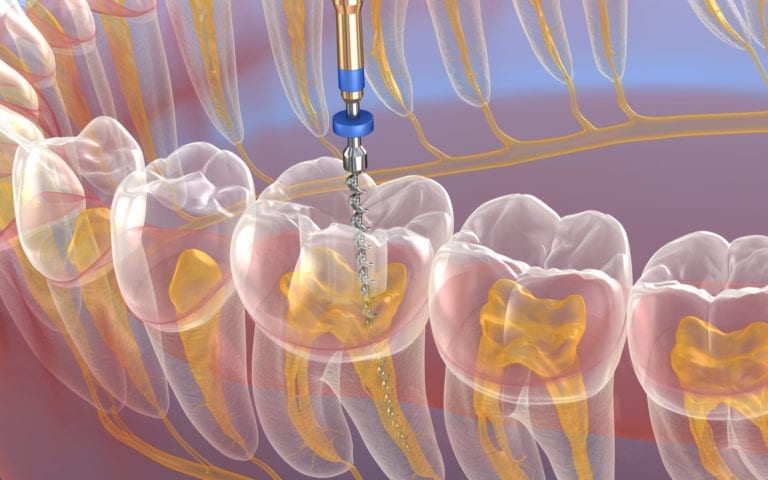What Is Endodontic Treatment?

When the topic of endodontic treatment comes up, you may be confused as to what, exactly, that entails. The secret is in the name. “Endo” and “odont” are the root words of endodontic and come from Greek. “Endo” means “inside,” while “odont” means “tooth.” Endodontic treatments, therefore, are treatments for the interior of your tooth. Are you still confused? Just keep reading! We’ll be covering the details of what’s involved in endodontic treatment, what to do to prepare, and what to expect during healing from the treatment. Let’s start by talking about why you might need an endodontic procedure.
Why Are Endodontic Procedures Necessary?
Your teeth are like onions, in this case, meaning that they have layers. The outermost layer is made of enamel, the hardest substance in the body, and the reason your teeth can stand up to the forces they experience while chewing. Beneath that is a softer porous material known as dentin. Dentin serves to reinforce the enamel, protect the softer inner layer, and allow sensation to be experienced between enamel and nerve. In the center of it all is the pulp. The pulp is a gelatinous material comprised of flesh, blood vessels, and nervous tissue. When the pulp becomes infected, an endodontic procedure may be necessary to save your tooth.
How Will I Know That It’s Time For An Endodontic treatment?
The first sign that you may be in need of endodontic treatment is increased sensitivity to cold and heat. This is often accompanied by discoloration and tenderness to chewing and the tooth being touched. Additionally, you may notice drainage, swelling, and tenderness of the lymph nodes near the affected area. The bone and gum tissues near the site may also be experiencing these symptoms to some degree. In some cases, you may not have any noticeable symptoms when an infection is present. At these times, only your dentist can tell you that an endodontic treatment was necessary.
How Can Receiving An Endodontic Treatment Save My Tooth?
When an infection has set in in your pulp, antibiotics are often ineffective at managing it. Without getting it under control, the infection can spread, affecting your bones and even getting into your bloodstream. An endodontic procedure removes the infected pulp, cleans and sanitizes the interior of the tooth, and then fills it with gutta-percha, a special cement. Once this is completed, a restorative crown will be put on the tooth to prevent reinfection and restore the durability of the tooth. Without endodontic procedures, the only alternative would be extraction.
Patients at Bethesda Family Dentistry know they can rely on us for quality dental care. Under the guidance of Dr. Deborah Tabb, our team provides a range of dental services that include endodontic treatment. If you live near the Bethesda, MD area and are experiencing symptoms you suspect may be associated with infected pulp, then give our offices a call to arrange an appointment. We’ll schedule you for a convenient time and help you get started on the road to great dental health with Bethesda Family Dentistry.






Recent Comments